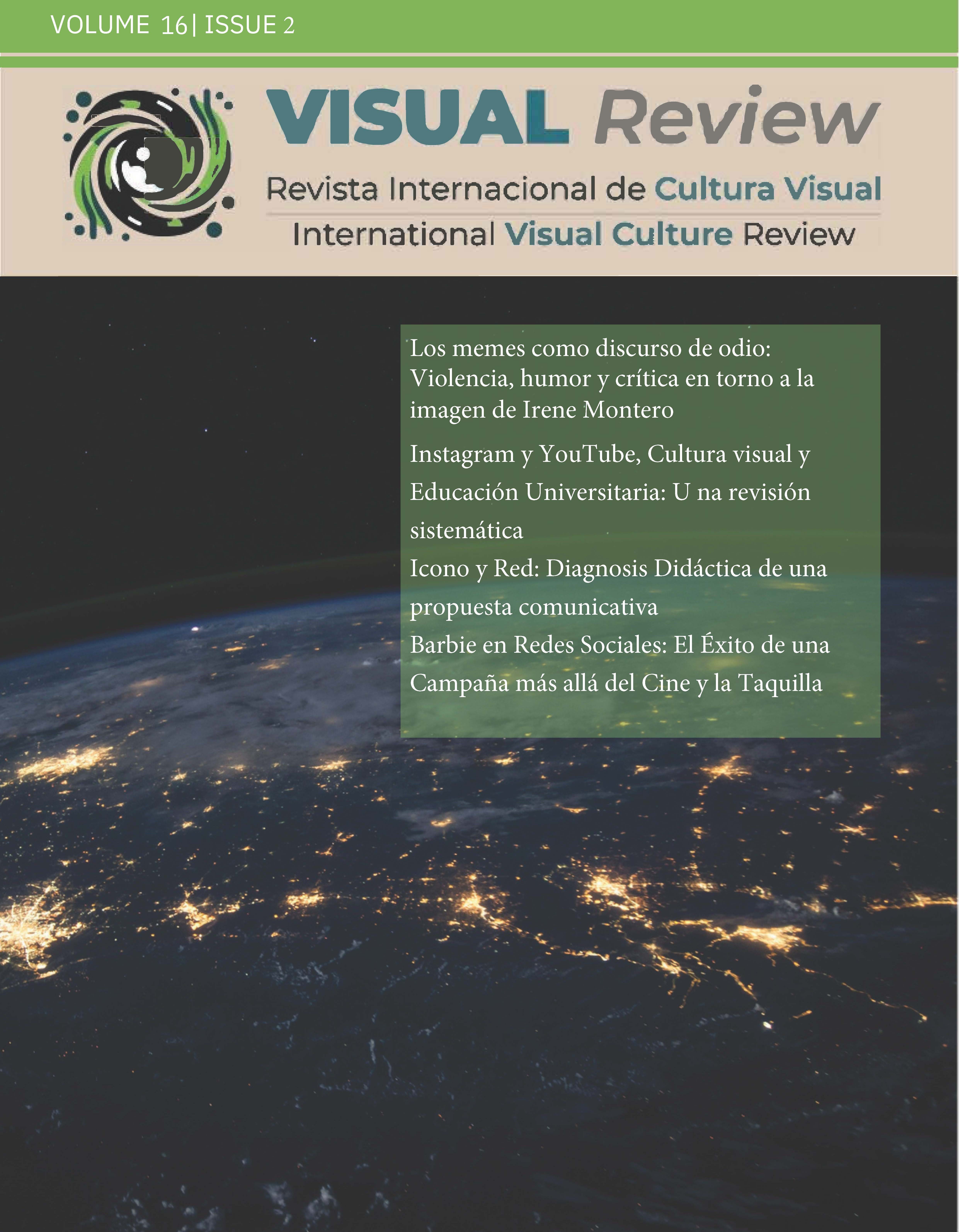Innovation in Architecture
The Role of Digital Technologies and Social Networks in Academic Education
DOI:
https://doi.org/10.62161/revvisual.v16.5227Keywords:
Computational design, Parametric architecture, Twitch, Educational innovation, Social networksAbstract
This research analyzes the role of certain social networks as educational tools in learning architecture, specifically in project workshops focused on parametric design, a method closely linked to the conceptualization and application of computational design.
The research focuses on the question of whether these digital experiences can match social interaction in design workshops, an aspect considered essential by several education experts for the development of technical and creative skills.
Downloads
Global Statistics ℹ️
|
597
Views
|
189
Downloads
|
|
786
Total
|
|
References
Castells, M. (2009): Comunicación y poder. Madrid, España: Alianza.
Colin Ford, D. G. (2017, Mayo 6). Chat Speed OP PogChamp: Practices of Coherence in Massive Twitch
Chat. CHI Conference Extended Abstracts on Human Factors in Computing Systems (págs. 858–
. New York: Association for Computing Machinery.
https://doi.org/10.1145/3027063.3052765 DOI: https://doi.org/10.1145/3027063.3052765
del Blanco García, F.L., García Ríos, I., González Uriel, A. (2020). Process Design for Automation. In: DOI: https://doi.org/10.1007/978-3-030-47983-1_35
Agustín-Hernández, L., Vallespín Muniesa, A., Fernández-Morales, A. (eds) Graphical Heritage.
Springer Series in Design and Innovation, vol 6. Springer, Cham. https://doi.org/10.1007/978-3-
-47983-1_35
del Blanco García, F. L. (2022). Reconstructing Pérez Piñero’ s Anoeta Velodrome. Nexus Network Journal
, 913-934. https://doi.org/10.1007/s00004-022-00590-3 DOI: https://doi.org/10.1007/s00004-022-00590-3
del Blanco García, F. L. (2021). Virtual reconstruction and geometric analysis of Félix Candela’s
inverted umbrellas for The Villahermosa Cathedral. Disegnarecon, 14(27), 1–14.
https://doi.org/10.20365/disegnarecon.27.2021.10
Dux, J. (2018). Social Live-Streaming : Twitch.TV and Uses and Gratification Theory Social Network
Analysis. 8th International Conference on Computer Science, Engineering and Applications, 8.
https://doi.org/10.5121/csit.2018.80305 DOI: https://doi.org/10.5121/csit.2018.80305
García Ríos, P. y del Blanco García, F. L. (2023). New Babylon. Análisis y reconstrucción virtual de la
visión utópica de Constant Nieuwenhuys, EGA Expresión Gráfica Arquitectónica, 28(47), pp. 256–
https://doi.org/10.4995/ega.2023.16173 DOI: https://doi.org/10.4995/ega.2023.16173
García, R. C. (2021). El lenguaje de los videojuegosanglicismo y creatividad léxica en la plataforma
Twitch. En R. P. Salud Adelaida Flores Borjabad, Nuevos retos y perspectivas de la investigación
en Literatura, Lingüística y Traducción (págs. 1062-1082).
Gerber, D.J., Pantazis, E., 2016. A multi-agent system for façade design: a design methodology for design
exploration, analysis and simulated robotic fabrication. In: Proceedings of the 36th Annual
Conference of the Association for Computer Aided Design in Architecture, pp. 12e23.
Flores-Saviaga, J. H. (2019). Audience and Streamer Participation at Scale on Twitch. 30th ACM
Conference on Hypertext and Social Media (págs. 277–278). New York: Association for
Computing Machinery. https://doi.org/10.1145/3342220.3344926 DOI: https://doi.org/10.1145/3342220.3344926
Jabi, W., (2013). Parametric Design for Architecture. London, UK Laurence King Publishing Ltd,.
Jabi, W., Soe, S., Theobald, P., Aish, R., Lannon, S., (2017). Enhancing parametric design through nonmanifold topology. Des. Stud. 1e19. DOI: https://doi.org/10.1016/j.destud.2017.04.003
Luque-Sala, A., del Blanco García, F.L. (2023). A Virtual Reconstruction of Gaudi’s Skyscraper Hotel
Attraction Using Physics-Based Simulation. Nexus Network Journal, 25(3), 795-816.
https://doi.org/10.1007/s00004-023-00655-x DOI: https://doi.org/10.1007/s00004-023-00655-x
Morales, G. (2015). Aspectos educativos de las redes sociales: un análisis de los factores que determinan su
puesta en práctica. (Tesis doctoral). Universidad de Sevilla, Sevilla.
Moreno Latorre, A.; del Blanco García, F. L. (2021). Graphic communication in Architecture
Competitions. Data visualization as an analysis tool in EGA. EGA Expresión Gráfica Arquitectónica,
(41), 190–205. https://doi.org/10.4995/ega.2021.14054 DOI: https://doi.org/10.4995/ega.2021.14054
Oxman, R., (2006). Theory and design in the first digital age. Des. Stud. 27, 229e265. DOI: https://doi.org/10.1016/j.destud.2005.11.002
Oxman, R., (2008). Digital architecture as a challenge for design pedagogy: theory, knowledge, models DOI: https://doi.org/10.1016/j.destud.2007.12.003
and medium. Des. Stud. 29, 99e120.
Oxman, R., (2012). Novel concepts in digital design. In: Gu, N. Wang, X. (Eds.), Computational Design DOI: https://doi.org/10.4018/978-1-61350-180-1.ch002
Methods and Technologies: Applications in CAD, CAM and CAE Education. Information Science
reference, United States, pp. 18e33.
Oxman, R., (2017). Thinking difference: theories and models of parametric design thinking. Des. Stud. DOI: https://doi.org/10.1016/j.destud.2017.06.001
e36.
Rocker, I.M., (2006). When code matters. Architect. Des 76 (4), 16e25. DOI: https://doi.org/10.1002/ad.289
Simon, H.A., (1969). The Sciences of the Artificial. MIT Press, Cambridge, Massachusetts.
Vygotsky, L. (2012). El desarrollo de los procesos psicológicos superiores (S. Furió, Trad.). Austral.
(Original work published).
Downloads
Published
How to Cite
Issue
Section
License
Copyright (c) 2024 VISUAL REVIEW. International Visual Culture Review / Revista Internacional de Cultura Visual

This work is licensed under a Creative Commons Attribution-NoDerivatives 4.0 International License.
Those authors who publish in this journal accept the following terms:
-
Authors retain copyright.
-
Authors transfer to the journal the right of first publication. The journal also owns the publishing rights.
-
All published contents are governed by an Attribution-NoDerivatives 4.0 International License.
Access the informative version and legal text of the license. By virtue of this, third parties are allowed to use what is published as long as they mention the authorship of the work and the first publication in this journal. If you transform the material, you may not distribute the modified work. -
Authors may make other independent and additional contractual arrangements for non-exclusive distribution of the version of the article published in this journal (e.g., inclusion in an institutional repository or publication in a book) as long as they clearly indicate that the work was first published in this journal.
- Authors are allowed and recommended to publish their work on the Internet (for example on institutional and personal websites), following the publication of, and referencing the journal, as this could lead to constructive exchanges and a more extensive and quick circulation of published works (see The Effect of Open Access).













